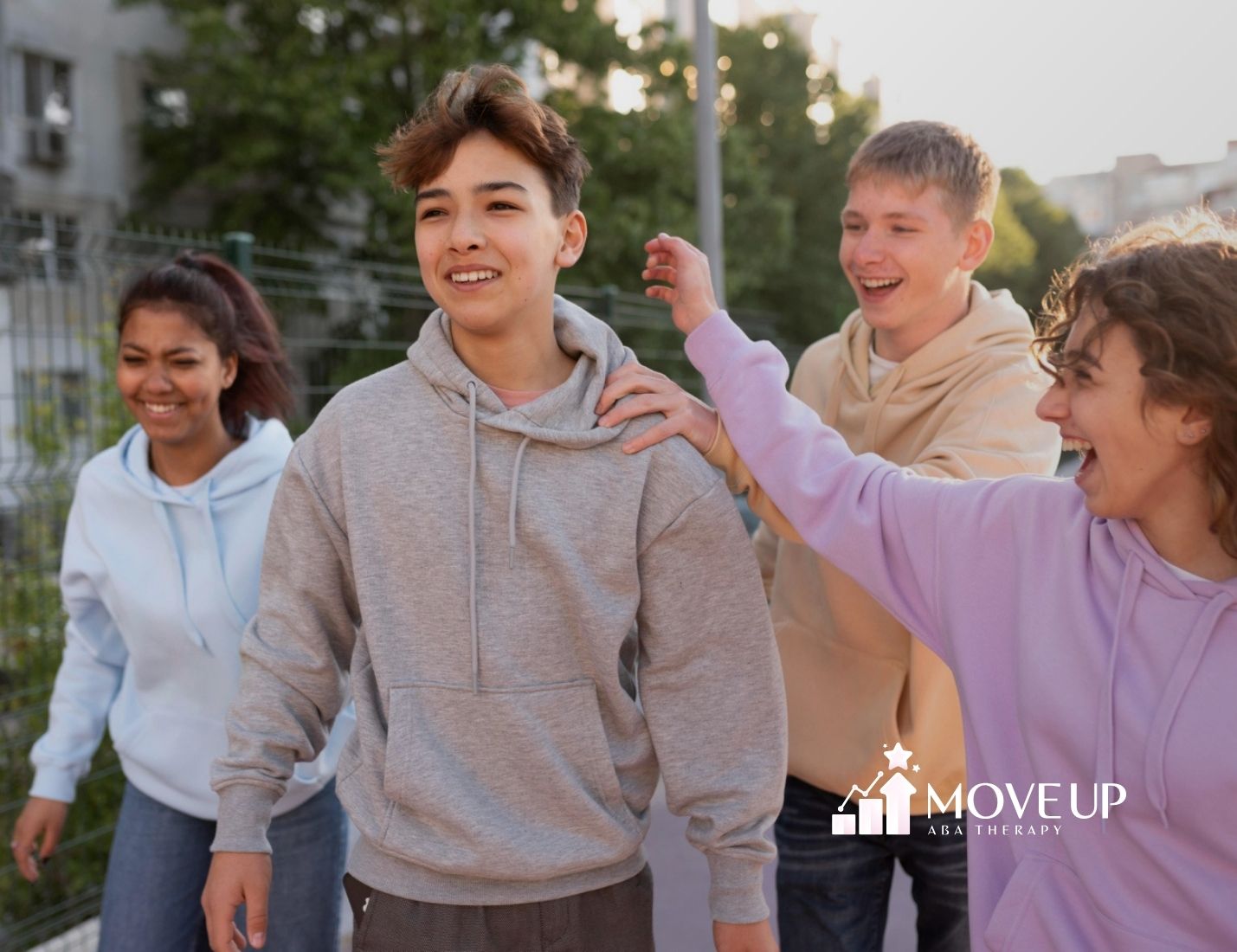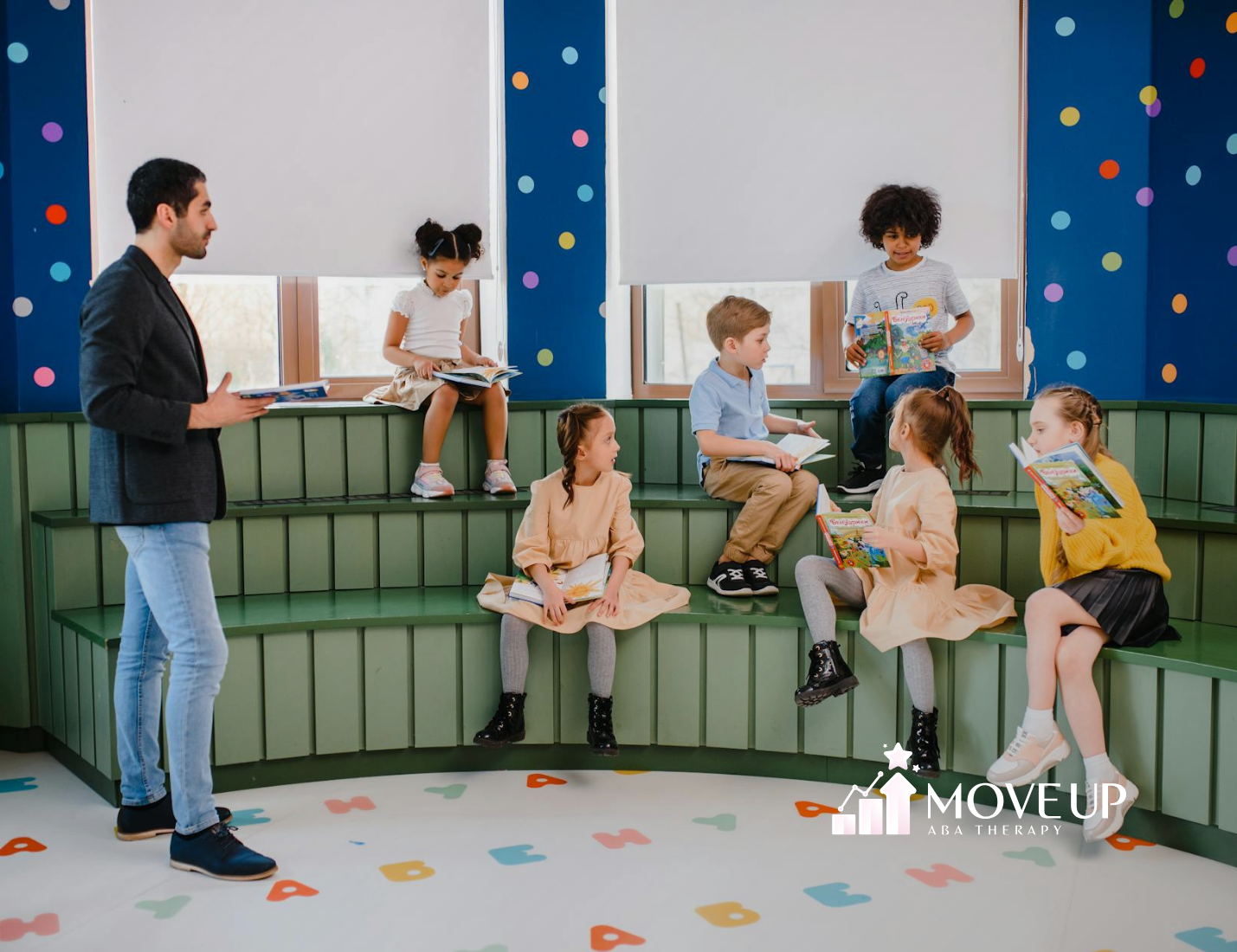Teenagers want independence, but for those with autism, that desire can feel out of reach. Fortunately, ABA therapy provides practical, real-world tools to bridge that gap—without overwhelming them.
One teen I worked with had trouble managing a simple routine. Through task analysis and a token economy system, we built a structure that empowered him to manage his own hygiene, homework, and even chores. His sense of accomplishment was priceless.
Understanding ABA Therapy for Teenagers
Overview of ABA Therapy
As someone who works closely with teens in the ABA field, I can tell you—Applied Behavior Analysis (ABA) therapy is more than just a clinical approach. It’s a powerful, evidence-based method for understanding behavior and how it’s influenced by our surroundings.
In ABA, we focus on improving specific, meaningful behaviors—things like communication, social skills, academics, and daily living routines. Whether it’s learning to advocate for themselves or building better hygiene habits, the goal is always the same: increase positive behaviors and reduce the ones that might be getting in the way.
What makes ABA especially effective is how personalized it is. Every teenager has unique strengths and challenges, and their therapy plan should reflect that. In my experience, this individualization makes all the difference in helping teens reach their full potential.
Importance of ABA Therapy for Teenagers
The teenage years can be tricky for anyone—but for teens with autism or behavioral challenges, they can be especially complex. That’s why I strongly recommend ABA therapy during adolescence.
This is a time when teens are figuring out who they are, navigating new social dynamics, and preparing for major life transitions. ABA therapy offers them structured support during this critical period. It helps with emotional regulation, peer relationships, and even vocational readiness.
I’ve worked with teens who’ve gained newfound confidence simply because they mastered a daily routine or learned how to handle a difficult social situation. For many, ABA becomes the bridge between struggling and thriving.
Targeted ABA Techniques for Teenagers
Positive Reinforcement
If I could sum up one of the core principles we use in ABA, it’s this: behavior that gets rewarded gets repeated. That’s where positive reinforcement comes in.
Whether it’s praise, extra screen time, or access to a favorite activity, we use reinforcers that are meaningful to each teen. The idea is to celebrate the small wins and use them to build momentum.
Some of the go-to reinforcers I use with teens include:
- Verbal praise (“Great job staying on task!”)
- Bonus screen time after homework
- Special time doing a preferred activity
Task Analysis
Have you ever tried teaching a teenager how to do laundry or plan a budget? It can be overwhelming—for both of you! That’s why I use task analysis, which involves breaking down complex tasks into smaller, teachable steps.
Here’s how it works:
- Identify the overall task.
- Break it into manageable parts.
- Teach one step at a time.
- Reinforce progress along the way.
This is incredibly effective for life skills like cooking, hygiene, or schoolwork. Over time, those small steps lead to big achievements.
Prompting and Fading
When a teen is learning something new, a little help goes a long way. That’s where prompting comes in. Prompts can be verbal, visual, or even physical—but the key is to gradually remove them, a process we call fading.
In my sessions, I start with the least intrusive prompt necessary, then reduce it as the teen becomes more confident and independent. This approach builds autonomy without setting them up for failure.
Common prompt types include:
- Verbal (e.g., “What comes next?”)
- Physical (e.g., guiding hand movements)
- Visual (e.g., step-by-step picture guides)
Social Skills Development in Teenagers
Peer Interaction
Social skills don’t always come naturally, especially for teenagers on the spectrum. I’ve seen how structured peer interaction can open doors for better communication and confidence.
In therapy, we practice skills like turn-taking, reading body language, and starting conversations using tools like:
- Role-playing
- Social stories
- Group activities
- Video modeling
These sessions create safe spaces where teens can learn, make mistakes, and grow socially.
Communication Skills
Good communication is about more than just talking—it’s about understanding and being understood. I work with teens to build both verbal and non-verbal communication skills using tools like:
- Speech therapy
- Picture Exchange Communication System
- Augmentative and Alternative Communication devices
We also focus on things like making eye contact, interpreting tone of voice, and knowing when to listen. It’s amazing how these skills can build confidence and connection.
Emotional Regulation
Managing emotions is tough, especially for teens dealing with sensory overload or anxiety. In ABA, we teach emotional regulation strategies such as:
- Deep breathing
- Mindfulness exercises
- Cognitive-behavioral tools
I also help teens identify emotional triggers and build personalized coping plans. Watching a teen go from meltdowns to moments of self-regulation? That’s one of the most rewarding parts of my job.
Behavior Management Strategies
Functional Behavior Assessment (FBA)
Before we can change a behavior, we need to understand why it’s happening. That’s where a Functional Behavior Assessment comes in.
Here’s what I typically do:
- Observe the teen in different environments
- Interview parents, teachers, and the teen
- Analyze data to spot patterns and triggers
The goal is to figure out the function behind the behavior—whether it’s attention-seeking, escape-driven, or sensory-related. Once we know the “why,” we can create meaningful solutions.
Behavior Intervention Plan (BIP)
After an FBA, we put together a Behavior Intervention Plan—basically a game plan to reduce challenging behaviors and increase positive ones.
A good BIP includes:
- Clear target behaviors
- Evidence-based interventions
- Consistent reinforcement strategies
- Progress monitoring tools
It’s a collaborative effort involving everyone: parents, teachers, therapists, and, of course, the teen. When we’re all on the same page, real change can happen.
Token Economy System
I’m a big fan of the token economy system because teens love seeing tangible progress. Tokens (like points, stickers, or digital rewards) are earned for positive behaviors and can be exchanged for preferred items or privileges.
This system teaches delayed gratification, responsibility, and even budgeting. I’ve had teens save up tokens for things like a pizza night or a new game—it’s fun and functional.
Building Transition and Independence Skills
Daily Living Skills
From brushing teeth to doing laundry, daily living skills are essential for independence. In ABA therapy, I use structured routines, visuals, and reinforcement to teach these everyday tasks.
Some of the skills we focus on include:
- Personal hygiene and grooming
- Cooking simple meals
- Cleaning and organizing
- Managing money and shopping
Mastering these skills not only builds self-sufficiency—it boosts confidence.
Vocational Training
Helping teens prepare for the workforce is one of the most practical (and exciting) parts of ABA therapy. I guide them through:
- Exploring their strengths and interests
- Writing resumes and practicing interviews
- Learning time management
- Developing workplace etiquette
Vocational skills give teens a sense of purpose and open doors for future opportunities.
Community Integration
The world is full of opportunities—but navigating it can be overwhelming. ABA therapy helps teens become more engaged in their communities through:
- Using public transportation
- Participating in local events or volunteering
- Building social networks outside of school or therapy
These experiences foster connection and give teens a real sense of belonging.
Collaborating with Therapists, Educators, and Parents
Individualized Treatment Plans (ITPs)
Every teen I work with gets a personalized Individualized Treatment Plan. We assess their current skills, challenges, and goals, then build a roadmap for success.
The ITP includes:
- Specific goals
- Chosen ABA techniques
- Reinforcement strategies
- Plans for monitoring and adjusting
It’s a living document that grows with the teen, and we update it regularly based on progress.
Progress Monitoring
I take progress seriously. We collect and analyze data constantly so we can see what’s working and what’s not.
This includes:
- Baseline data to track where we started
- Ongoing session notes and behavior tracking
- Charts and visuals to show progress trends
This data-driven approach ensures we’re not guessing—we’re responding to what the data tells us.
Communication and Feedback
One thing I always tell parents and teachers: ABA therapy works best when we’re all working together.
We hold regular check-ins, share reports, and create space for everyone to give feedback. Whether it’s a text update, a formal meeting, or a quick chat after school, these conversations are vital.
Together, we create a support system that surrounds the teen with consistency, compassion, and care.
At Move Up ABA, we believe every teenager deserves the right tools and support to thrive. Whether your teen is just starting ABA therapy or needs help navigating the complexities of adolescence, our expert therapists in Maryland are here to guide you every step of the way.
Reach out to us today at info@moveupaba.com or give us a call at (410) 497-8865 to get started. Let’s work together to build a future filled with growth, confidence, and independence.
FAQs
What are the most effective ABA therapy techniques for teens?
Some of the most effective techniques include positive reinforcement, task analysis, prompting and fading, social skills training, and behavior intervention plans—each tailored to the teen’s unique needs.
Can ABA therapy help teenagers become more independent?
Yes, ABA therapy focuses on building essential life skills like hygiene, communication, time management, and vocational training to help teens gain independence and confidence.
How does ABA therapy support emotional regulation in teens?
ABA therapy teaches teens how to identify emotions, manage triggers, and apply healthy coping strategies through mindfulness, cognitive-behavioral tools, and reinforcement systems.
Sources:
- https://www.autismspeaks.org/expert-opinion/aba-teens
- https://pmc.ncbi.nlm.nih.gov/articles/PMC7265021/
- https://pmc.ncbi.nlm.nih.gov/articles/PMC5044466/
- https://pmc.ncbi.nlm.nih.gov/articles/PMC9458805/
- https://childmind.org/article/what-is-a-behavior-intervention-plan/






